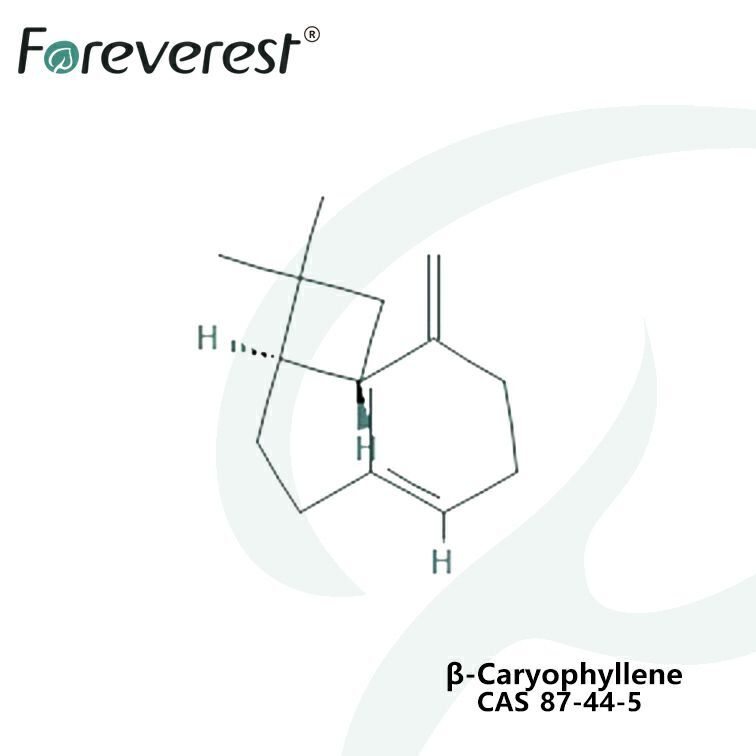beta Caryophyllene
Beta-caryophyllene is a bicyclic sesquiterpene that is found in essential oils including basil, copaiba, black caraway, oregano, lavender, rosemary, cinnamon, ylang-ylang, and clove.
It is usually found as a mixture with isocaryophyllene (the cis double bond isomer) and α-humulene (obsolete name: α-caryophyllene), a ring-opened isomer.
Beta-caryophyllene can be manufactured from turpentine by-products industrially.
Substance Identification
| Synonyms | β-Caryophillene | β-cariofillene | Caryophyllene | (E)-β-Caryophylene |
| CAS | 87-44-5 |
| EINECS | 201-746-1 |
| FEMA | 2252 |
| HS.CODE | 290219 |
| Molecular Formula | C15H24 |
| Moleclar Weight | 204.36 |
Application & Uses
- used as food additive, in spice blends and citrus flavors, especially in chewing gum. The recommended dosage is about 2~200mg/kg in the final flavored food.
- used in soaps and detergents.
- used to synthesize other fragrances, such as for the synthesis of more valuable spices such as acetyl caryophyllene.
- used in the preparation of imitations of essential oil and deodorant
Features & Benefits
- Effects: Calming, Relaxing
- Medical value: Anti-inflammation, Anti-bacterial, Anti-oxidant
- Mostly found in: gum turpentine, Black Caraway, cloves, hops, basil, oregano, black pepper, lavender, rosemary
Sales Specification
| ITEM | VALUE |
|---|---|
| Color and Appearance | Colorless to pale yellow,oily liquid |
| Odor | Pale clove odor |
| Purity, % | 85 min |
Similar Specs
GHS Hazard Statements
| H-Code | H304/317 |
| P-Code | P261/272/280 |
| Response | P301+P310 P302+P352 P331 P333+P313 P362+P364 |
| Storage | P405 |
| Disposal | P501 |
Storage
- flammable materials should be stored in a separate safety storage cabinet or room
- ground all equipment containing material
- keep away from heat
- keep away from sources of ignition
- keep container tightly closed
- keep in a cool, well-ventilated place
Relation Products
Relation Articles
- The benefits of Terpenes on health and well-being
- Terpenes (C5H8)-medicinal molecules and important building blocks in nature
- Polyterpenes by ring opening metathesis polymerization of caryophyllene and humulene
- TERPENE ESSENTIAL OILS: The research and development direction of anti-virus drugs is concerned
- Terpenes from Forests and Human Health
- Why do scholars study the antiviral envelope activity of essential oil from its antibacterial
- The benefits of the β-Caryophyllene(BCP)
- The composition of the essential oil
Remark
Start Purchasing
-
Minimum Order Quantity
Quote required -
Lead Time
Quote required -
Available Incoterms
Quote required -
Regional Availability
Quote required
